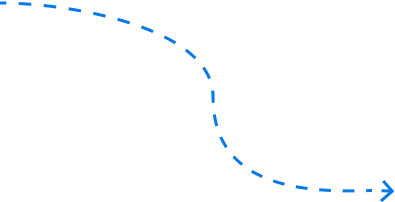The essential information
required for successful trading
has been collected by us



Basic trader terms
Financial Exchange
Financial Exchange a place where buyers and sellers can trade securities, commodities, currencies, etc., also an exchange is an organization that provides and regulates the trading process.
There are commodity, currency and cryptocurrency, futures and stock exchanges. They sell and buy, respectively, exchange commodities (precious metals, energy, industrial raw materials, etc.), currencies and cryptocurrencies, futures contracts and securities.
Stock market
Closely related to the concept of a stock exchange is the stock market or securities market – the relationship between investors, issuers and their intermediaries associated with the issue and circulation of securities (shares, bonds, futures), which give their owners certain (financial) rights.
Equity
The value of an asset after deducting all liabilities from it is called equity. This indicator is important for assessing the financial condition of the company and the advisability of investing in it, for example, buying its shares.
Futures
There are different types of derivatives, for example, futures – contracts under which the parties undertake to complete a purchase and sale transaction of a certain asset at a predetermined price within a specified period, as well as options – contracts that give the right (not the obligation!) to purchase a certain asset at a specified price. price at a predetermined time.
Market capitalization
Market capitalization is an indicator that allows you to estimate the value of a company, expressed through the value of all shares issued by it. To calculate it, you need to multiply the market price of the shares by their total number. Market capitalization gives traders a way to gauge the size and reliability of a company.
IPO (Initial Public Offering)
IPO (Initial Public Offering) is the initial placement of securities or other assets of a company on the stock exchange. Anyone can purchase them and become a shareholder of the company, which as a result changes its status and turns from private to public. In this way, companies attract finance for their development.
Marketable securities
Marketable securities are one of the types of financial instruments – these are rights to tangible or intangible assets with a certain value. They represent a real or virtual document – a contract between two parties – as a result of which one of them receives financial assets and the other is subject to financial obligations.
An asset
An asset (underlying asset) is a general name for goods traded on an exchange: securities, raw materials, etc. Assets are also the property of a company or individual, tangible and intangible (for example, a brand) property that has a monetary value and is capable of generating profit. Assets are divided into capital (real estate and equipment), financial and intangible (goodwill). The tangible and intangible assets of a company are called capital.
Liabilities
On the other side of the scale are always the organization’s liabilities, i.e. its obligations, for example, debts or loans.
A derivative
A derivative is a financial contract, as well as an obligation to perform a certain action regarding an underlying asset. The value of a derivative is tied to and based on the price of the underlying asset, but is not necessarily equal.
Liquidity
One of the most important indicators for any asset is its liquidity, i.e. the ability to quickly and without loss exchange an asset for cash at market value and vice versa.
Fiat currencies (FIAT)
Fiat currencies (FIAT) are national currencies, for example, US dollar, euro, yuan.
A stock market index
A stock market index is an indicator that represents the aggregate price of shares of its constituent companies, tracks the behavior of shares and allows one to measure their performance. Indexes can track stocks of companies in a specific industry or size. For example, the Dow Jones Industrial Average is calculated based on the share prices of the 30 largest US companies that trade on the New York Stock Exchange, and the FTSE 100 is based on the 100 largest companies on the London Stock Exchange.
Crypto Dictionary
Bid (ask price) is the maximum amount that a buyer is willing to pay to purchase an asset.
Its opposite is the ask (offer price) – the minimum price that the seller of the asset agrees to.
The bid price will always be lower than the offer price and the difference between them is called the bid-ask spread or simply the spread. Bid and ask allow traders to estimate the objective value of an asset at a given moment.
Fluctuations in the price of an asset and its deviation from the average or normal value are called volatility.
A bull market or rising market is a period of constant growth in the value of an asset over a long period (from several months to several years). Typically, a bull market is said to be in place if asset prices have risen 20% from their most recent low and continue to rise for more than six months. During a bull market, frequent short-term price declines are possible, which, if 10% of the last high, is called a correction. A price drop of 20% from the last high marks the end of the bull market period.
The opposite of a bull market is a bear or falling market, which is a period of continuous decline in the value of an asset. Its occurrence is signaled by a price drop of 20% or more from its last maximum value.
Trader tools and strategies
One of the basic concepts and tools of trading is an order – an instruction (order, application) created by an investor to the exchange to carry out a certain operation with a particular asset under specified conditions. There are two main types of orders: market and pending.
A market order is executed immediately upon receipt on the exchange at the best current price.
A pending order is only when certain conditions are met, usually when the price reaches a certain level. For example, a stop-loss order provides for the automatic closure of a position (sale of an asset) when its price falls to a certain level, which reduces the investor’s losses, and a take-profit order — when it reaches a specified maximum.
Exchange glass (order book) is a list of buy and sell orders, as well as transactions and information about securities and other financial instruments. As a rule, sell orders are displayed at the top, and buy orders at the bottom. Another section of the order book contains information about the cost and volume of the last transaction. The best offers that are presented in the order book form the bid, ask and spread values for the asset. An order book is useful for a trader in that it allows you to determine the attractiveness of an asset, its purchase or sale.
To predict price fluctuations, traders use two main methods: technical and fundamental analysis.
Technical analysis relies on historical data and an understanding of recurring market cycles to evaluate financial instruments and their investment opportunities. That is, a trader studies the history of an asset (particular attention is paid to its price and volume on the market), using statistical methods or charts to look for and identify patterns in price behavior.
Fundamental analysis, in contrast to technical analysis, studies and takes into account a wide range of factors: financial statements of the company and industry, possible development prospects, political, social factors, etc. The trader bases his forecasts on the basis of research, as well as macro (the state of the economy as a whole) and microeconomic (income, profit, company equity) factors.
Technical analysis is most often used for short-term investments, while fundamental analysis allows you to identify undervalued or overvalued financial instruments (for example, shares) and win by buying/selling them when the market catches up with fundamental indicators.
The beta coefficient is also an indicator that measures the volatility of any security compared to another reference asset. It is calculated by comparing the dynamics of the value of specific shares with the dynamics of the stock market as a whole. If the beta value is greater than 1, this means that the risk level of this asset is above the market average; if it is less, it is lower.
Long position (long) is a strategy in which a trader buys an asset with the goal of resell it in the future at a higher price. As a rule, when opening such a position, that is, buying shares or another asset, the investor does not intend to sell it in the near future and expects that its price will rise.
The opposite of a long position is a short position (short) – a strategy for making money, which is built on lowering the price of a certain asset. A trader sells securities that he believes will fall in value in the near future and then buys them back at a lower price. In this case, the investor initially receives securities on credit from the broker.
Diversification is an approach that involves the distribution of capital between assets with different risks, returns, etc., in order to minimize investment risks. That is, losses on one asset (for example, shares) can be offset by profits on another: gold or cryptocurrency.
Hedging is another strategy that aims to protect investments from loss by balancing risks.
Most often, when hedging, a trader takes opposing positions in economically interrelated markets, for example, buying shares that move in different directions (an airline and an oil company), or using futures and derivatives. Typically, hedging is used to generate income in the short term.
Join us, our qualified specialists will help you choose the most suitable option for making money on the financial market.
Are you ready to join a team of successful traders from all over the world?
Believe in yourself and take the first step
